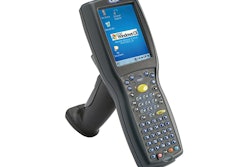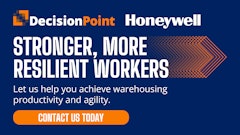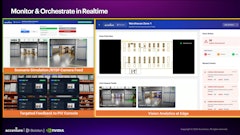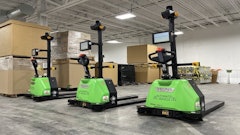
Most experts agree that the average lifecycle of a warehouse management system (WMS) is between eight and 10 years. Of course, inefficiencies that increase staff response time, as well as the inability to incorporate new technological advances or new functional requirements within legacy systems, may signal the need to retire a WMS long before the end of its projected life cycle.
Warehouse inefficiencies carry significant business costs both in terms of personnel time and customer satisfaction. Delays can even translate into lost business.
New technology enables warehouse operations to leverage the latest advances and be more efficient. Moreover, it helps reduce overhead costs, especially in those instances in which in-house staff maintained older technology and/or vendors were customizing the legacy system in an attempt to keep up with new demands.
Technology acquisitions are major capital investments deserving of careful due diligence. When considering a move to a new WMS, the management team should consider at least six factors when evaluating vendor offerings.
Factor #1: Software Sustainability
Sustainability is a key component when assessing software. It speaks to both the stability of the software and the vendor behind it.
Companies seeking a WMS application should be mindful that there are hundreds of applications in the marketplace branded as WMS software. Sometimes, it seems new vendor offerings appear daily. The technology employed provides insight into how viable a product may be. Key questions to ask include: Is the product a “one-off”? Is it open source? Is it Microsoft certified? Can it support new platforms, such as Android, Apple and others?
From a warehouse perspective, not many firms currently are using handheld and tablet technology, yet market trends are moving in that direction, especially for team leaders and operational managers. Firms looking to employ advanced applications in the near term should consider looking for WMS software that can integrate with this technology.
A vendor’s use of the .NET technology and C# language speaks to a desire to keep current with modern technology, and to develop secure and robust applications. It also is indicative of a future-oriented company whose application is not moving to a legacy status any time soon.
Possessing the credential of Microsoft Gold/Silver Partner similarly speaks to a firm that offers an application that is keeping pace with the ever-changing technologies. It also indicates that the vendor has a closer working relationship with Microsoft, giving it access to new Microsoft products earlier than the general marketplace. This access helps to ensure that the applications delivered support the newer technologies.
Factor #2: Customer Support
Customer support is one of the most important—yet frequently overlooked—considerations when acquiring WMS software. For many years, customer service was an afterthought. Today, it is a critical factor that sets companies apart. Successful vendors know that word-of-mouth reputation is vital, and one bad experience can make or break a firm. Do not be afraid to ask for references and speak candidly with current vendor customers.
To understand the support model a provider offers, start by looking at the level of support and service a vendor is willing to give before, during and just after product installation. Does it position itself as a partner or more like a fee-based service provider? Review how the provider handles customer training as well. Is the vendor willing to do hands-on training? Are they willing to come on site and work with staff to not only understand the application, but also how the application runs in the customer’s unique environment?
Assess the knowledge base evident within a company, too. Does it appear as though only one person holds all the product knowledge? What happens to support if that individual is unavailable? Look, too, at the vendor’s internal training program, and see how many support unit employees it encompasses, how detailed it is and how often it occurs.
Evaluate the availability of support as well. Is the vendor always available (24/7) or accessible only on a 24/5 basis? Does the vendor charge more for after-hour support?
Above all, determine whether the vendor can get you what you want when you need it—or at least provide a credible timeline for receipt. Honesty and integrity are two of the most important characteristics a vendor should possess in its dealings with its customers.
Factor #3: Software Features
WMS software can provide a variety of features. Clearly, the core features encompass areas such as: inventory management, lot or batch tracking, order processing functionality and product movement tracking. Beyond these offerings, the application should run on multiple platforms.
Consider, too, your business plan relative to warehouse or distribution center automation. More and more, it is becoming evident that WMS systems that are not born out of automation tend not to interface well with warehouse control systems (WCSs). Remember, WMS applications deal more with the administrative tasks of a warehouse, such as managing product and its turn, lifecycle and placement. WCS software is directed more toward equipment control, storage optimization and processes for optimal product retrieval.
If a business is just looking for a WMS system and has no plans to automate the warehouse, then integration is not a critical concern. However, if product movement with automation, such as conveyors, stretch wrapping, automated label application and so forth are under consideration, then the ability to integrate the WMS and WCS is vital.
Factor #4: Cost
Cost often is a more influential factor in smaller companies seeking WMS software than in larger firms. Still, the benefits a system provides should always carry more weight than the price tag.
Of course, all companies must consider return on investment (ROI) or how long it takes to pay back the capital investment. Most firms consider a good investment to be one in which ROI occurs within one to five years. The return can come in many forms, including labor savings and economies available through inventory reduction. The accuracy of the information a WMS provides—and the business advantage such data offer—is an often overlooked consideration that adds to ROI. It’s not strictly about headcount reduction, and dollars and cents.
Don’t forget the cost of annual software maintenance when evaluating cost. A system may cost $300,000 to acquire, however, the annual support costs to keep it current also must be contemplated.
Factor # 5: Consistency
In an ideal world, businesses would prefer a streamlined system to run all the logistics of warehouse operations seamlessly. Having one vendor’s enterprise resource planning (ERP) system and another’s WMS, etc., can create issues. Yet, each application serves a unique purpose, and different organizational units possess distinct preferences and separate purchasing efforts. So, the ability to integrate the candidate WMS across an enterprise is important.
Here again, the reliability of the information output is a concern. When information exchange between the ERP and the WMS is optimal, the entire supply chain works better. And, more and more, businesses are focusing on optimizing their complete supply chain.
Factor #6: Long-Term Supportability
Most experts estimate that annual system support costs average between 15 and 18 percent of the system acquisition cost. Most companies are comfortable with this estimate. Cost is not the most important factor, however. When it comes to supporting your firm, the more important questions are: Does the WMS vendor want to learn about and understand my business? How dedicated is that provider to assuring that the WMS keeps pace with my business as it grows and overall advancements in technology?
Relative to the latter, there is a continuum of support models. On one end, there is the model in which the customer is paying 15 to 18 percent just to have questions answered. On the other, there is the support model in which the vendor partners with the customer. Here, the customer can approach the vendor saying, “My business is changing and I need to integrate with another business unit. How easily can I bring that business on? Are you going to charge me full customization costs, or are you going to partner with me and work with me?”
Another factor to consider is whether keeping current with new technology requires undergoing a major upgrade. Most vendors offer one or two software updates a year. Anything more than that could be indicative of an unstable product in which the vendor is still growing and trying to understand what it needs to deliver.
A good support contract should cover any system needs the customer has throughout the contract term and enhance the original product through updates.
Conclusion
The biggest focus that many software vendors miss is customer support. Customer support and customer service should be a number one priority. The providers that understand this fact are not only going to be around for a long time, but also enjoy repeat customer business.
Software can offer all the bells and whistles in the form of hundreds of features, but in all likelihood, you, the customer, only uses a few of them. If the selected few don’t work well—and the vendor doesn’t support them or take the time to understand your business—then it is time to look elsewhere.




















